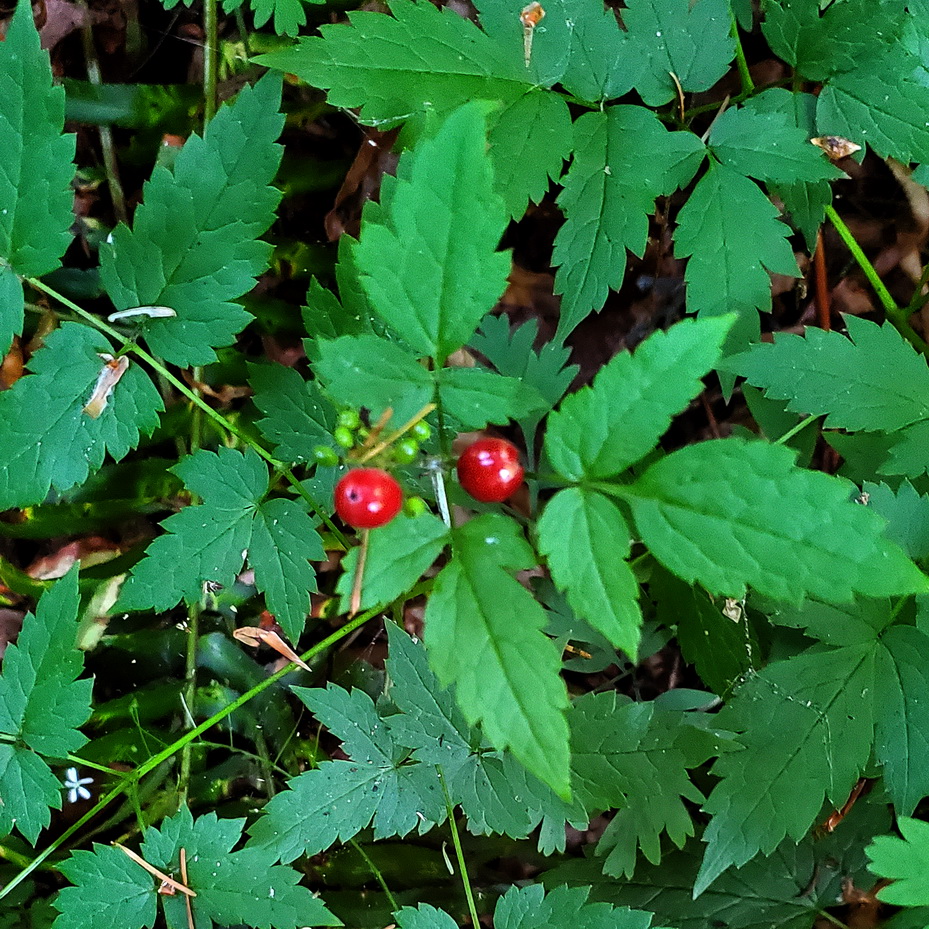In this blog I write about three plants that I’ve recently found for the first time in one of my forest restoration areas. Their mere presence reminds me of the amazing ability of plants to spread far and wide — relentless pioneers colonizing new areas in ingenious ways.
Baneberry(Actaea rubra)
Admittedly, the Baneberry I spotted recently (because of its red berries) may have already been in Forest Park, and I just hadn’t noticed it before. However, since the toxins of this plant supposedly don’t affect birds, it might have come from miles away. Perhaps it was “planted” by a Varied Thrush that fueled up on Baneberries before migrating downslope from the Cascades at the onset of winter.

I can see why it’s called “bane” berry. Its toxic berries could appear edible to the unwitting. Fortunately, they are supposedly bitter enough to dissuade anyone from eating a lethal amount.
At first glance the leaves look similar to other PNW forbs like the weedy Osmorhiza that is spreading rampantly in Forest Park, or the delightful Tiarella trifoliata, that hasn’t been doing as well this summer. Maybe it’s the lack of rain. I hope it’s not being pushed out by the Osmorhiza.
Hedge Nettle (probably Stachys cooleyae)
What a pleasant surprise to find a small patch of pink hedge nettle growing in a wet, shady deciduous forest. I think this colony might be a remnant from an historic population. I can imagine that after the logging of the original old-growth forest, there would have been a time when the area had full sun, and hedge nettle might have spread rampantly with its shallow rhizomes. Then, in the decades that followed, as Red Alder and Salmonberry took over and covered the area in shade, the hedge nettle population gradually shrank.

Hedge Mustard (Sysymbrium Genus)
I think the cluster of Hedge Mustard I found recently growing next to a paved walkway likely arrived by seed from somewhere outside of Forest Park. But how could the mustard’s tiny smooth seeds travel more than a few feet from a parent? On someone’s shoe? I was not able to find out if the seeds in the mustard family can survive passage through a bird’s digestive system, but that might be a more likely path.

Checking out the different species of Sysymbrium found in Washington (here), it appears that S. linifolium is native to eastern Washington, so I assume that the Sisymbrium I found, is one of several Eurasian species that are now naturalized worldwide. I relegated mine to the trash bucket and will keep an eye out in the same area for any of its siblings.